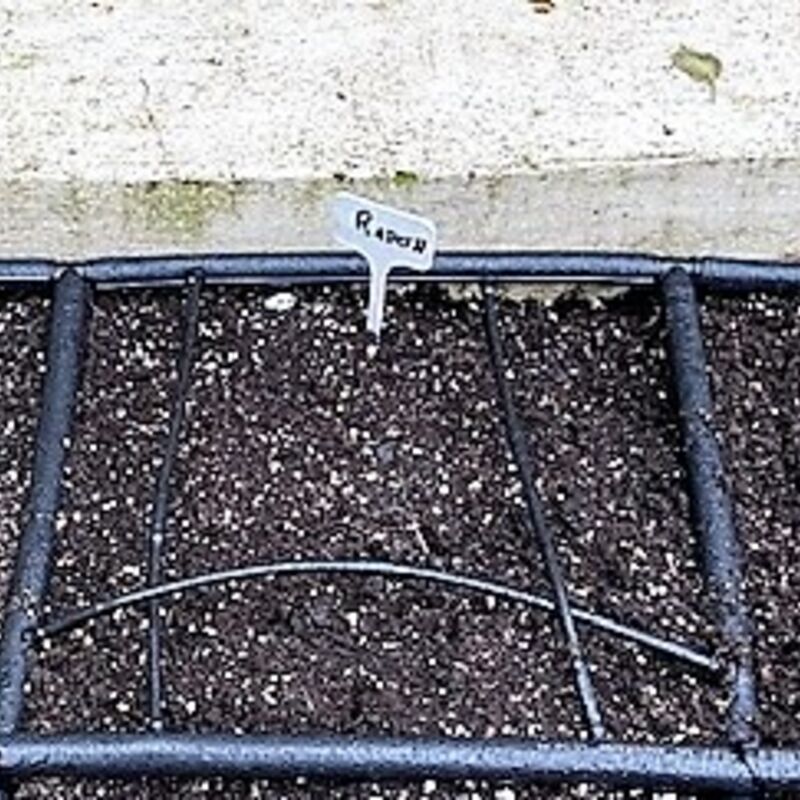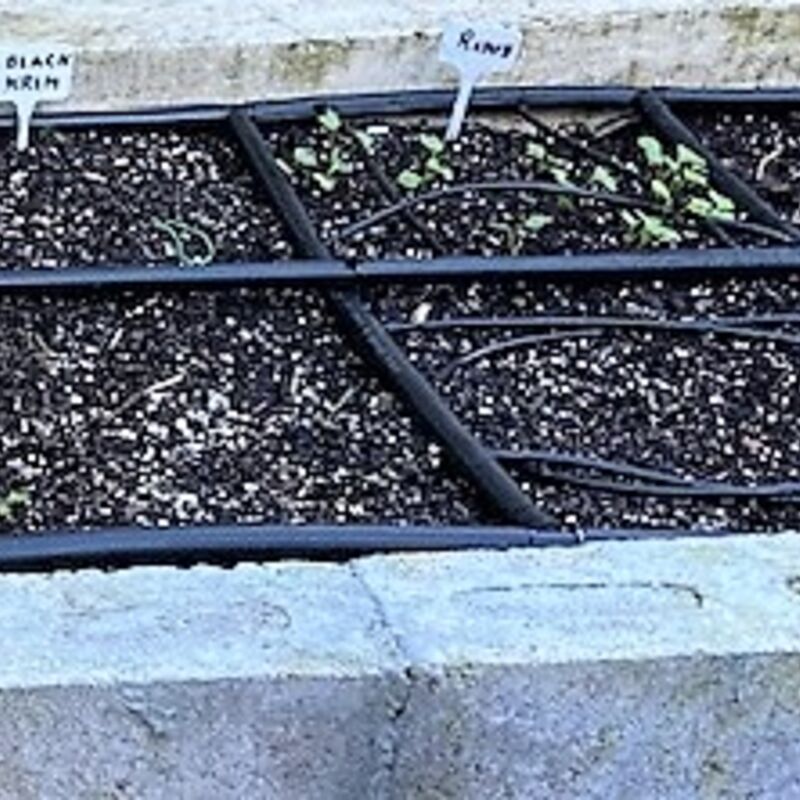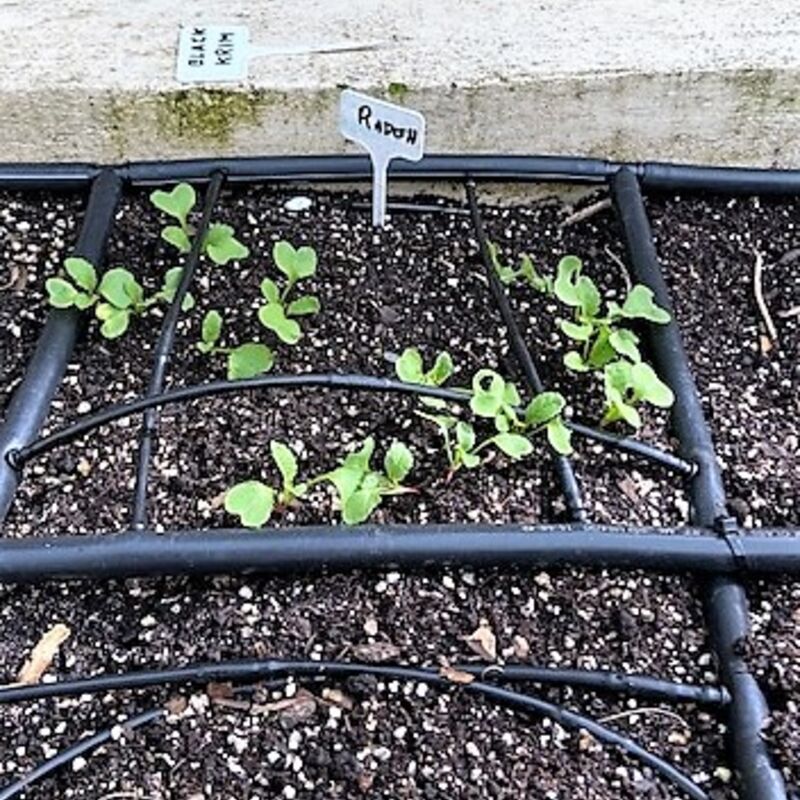Germination and growth
Radishes are consistently grown from seed directly into the soil, where they will grow to maturity and do not need to be started indoors and then transplanted.
Radish packets usually contain 250 to 500 seeds apiece, and usually, 75 per cent of seeds in a packet will germinate. Radish seed can stay viable for up to four years if kept in cool, dark conditions
Radish seeds take only four or five days to germinate and can be grown in raised beds or containers. If planted in succession for the entire growing season, there’s no reason not to get a harvest that lasts for months if a mixture of seeds with maturing times from 20 to 50 days is chosen.
Sow the seeds only ½ inch deep, a few at a time, and cover them with soil. Then water. Radishes need plenty of water to develop plump mature root bulbs, but they shouldn’t get soggy.
Radish seeds will germinate quickly and show some green growth within a week once the greens reach a few inches in height, thin the young plants to be about one inch apart. It’s okay to plant other things nearby.
Planting radishes from seeds works best if the soil is moist but does not have standing water. Radish sweeds should be sown very close to the surface, about ½ inch deep. It is recommended to sprinkle the soil on top of the seeds rather than bury the seeds; that way, they may be too deep.
Radish plants must be thinned fairly often once the tops have reached a height of an inch or two. That practice allows enough room for the roots to grow round and firm.
Companion plant
Radishes can be helpful as a companion plant for many other crops, probably because their pungent odour deters such insect pests as aphids, cucumber beetles, ants and squash bugs.
Cucumbers and radishes seem to thrive when grown in close association with each other, and radishes also grow well with lettuce and peas.
Pests
Diseases are not generally a problem with radishes as a fast-growing plant, but some insect pests can be a nuisance. The larvae of flea beetles (Delia radicum) live in the soil, but the adult beetles cause damage to the crop, biting small "shot holes" in the leaves, especially of seedlings.
GrowingSowing seeds
Companion planting
Radishes can be helpful as companion plants for many other crops, probably because their pungent odour deters such insect pests as aphids, cucumber beetles, tomato hookworms, squash bugs and ants.
They can also function as a trap crop, luring insect pests away from the main crop.
Cucumbers and radishes seem to thrive when grown close to each other, and radishes also grow well with lettuce and peas.
Growing radish
Radishes should be grown from seed directly into the soil. They take only four or five days to germinate and show their first green growth. There is no need to start them indoors and then transplant them.
Radish seed should be sown very close to the surface, about ½ inch deep. To accomplish this, the seeds were sown on 18 July on top of the soil and soil was sprinked on top of the seeds rather than trying to bury the seeds.
Planting radishes from seeds works best if the soil is moist but does not have standing water; healthy plants will resist pests and diseases more readily. Radish plants must be thinned fairly often once the tops have reached a height of an inch or two to give room for the roots to grow round and firm.
I provide water three times a day with my automated irrigation system. Radishes need plenty of water to make the mature root bulbs plump, but they shouldn’t get soggy.
Once the greens reach a few inches in height, thin the young plants, so they are about one inch apart. It’s okay to plant other things nearby.
Pests
As a fast-growing plant, diseases are not generally a problem with radishes, but some insect pests can be a nuisance.
The larvae of flea beetles (Delia radicum) live in the soil, but the adult beetles cause damage to the crop, biting small “shot holes” in the leaves, especially seedlings. The swede midge (Contarinia nasturtii) attacks the foliage and growing tip of the plant and causes distortion, multiple (or no) growing tips, and swollen or crinkled leaves and stems.

WW2 week 2 seedlings planted in soil in Bed B

WW2 Week 2 Radish with soaker system to prevent spash onto prevent splach on tomatoes

WW2 week 4